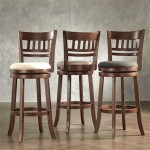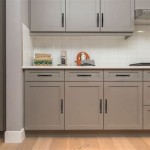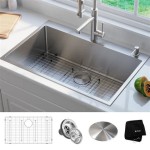Best Pull Down Kitchen Faucets: A Consumer Report Overview
The kitchen faucet is a crucial element in any kitchen, serving as a primary point for food preparation, cleaning, and general water access. Among the various types available, pull-down kitchen faucets have gained substantial popularity due to their flexibility and ease of use. This article provides a comprehensive overview of pull-down kitchen faucets, drawing upon consumer reports and expert opinions to offer guidance on selecting the best model for individual needs and kitchen configurations.
Pull-down faucets are characterized by a spray head that can be detached from the faucet's spout and extended downwards into the sink. This design offers increased maneuverability, allowing users to easily reach all corners of the sink and effectively rinse dishes, fill pots, and clean larger items. The convenience and versatility of these faucets have made them a staple in modern kitchens.
Choosing the right pull-down kitchen faucet involves careful consideration of several factors, including material quality, design features, water flow rate, and installation requirements. Consumer reports provide valuable insights into the performance and reliability of different models, helping consumers make informed decisions.
Key Considerations When Choosing a Pull-Down Kitchen Faucet
Selecting the optimal pull-down kitchen faucet requires a thorough evaluation of several aspects. Focusing on these key areas can significantly improve the chances of finding a faucet that meets both functional and aesthetic requirements.
Material and Finish:
The material of the faucet significantly impacts its durability and resistance to corrosion. Common materials include brass, stainless steel, and zinc alloys. Brass is known for its durability and resistance to corrosion, making it a popular choice for faucet bodies. However, brass can be more expensive than other materials.
Stainless steel is another widely used material, prized for its corrosion resistance and sleek appearance. Stainless steel faucets are typically more affordable than brass models and offer excellent durability. Zinc alloys are often used in less expensive faucets, but they may be more prone to corrosion and wear over time.
The finish of the faucet affects its appearance and resistance to scratches and stains. Common finishes include chrome, brushed nickel, oil-rubbed bronze, and matte black. Chrome is a classic and durable finish that is easy to clean. Brushed nickel offers a softer, more subtle look and is less prone to showing fingerprints. Oil-rubbed bronze provides a warm, traditional aesthetic and is often used in kitchens with a rustic or vintage design.
Matte black finishes have become increasingly popular in recent years, offering a modern and sophisticated look. However, matte black finishes may require more frequent cleaning to maintain their appearance.
Design and Functionality:
The design of the pull-down faucet should complement the overall style of the kitchen. Consider the height of the spout, the shape of the handle, and the overall aesthetic of the faucet. The height of the spout should be appropriate for the size of the sink and the types of tasks that will be performed. A taller spout may be necessary for filling large pots, while a shorter spout may be more suitable for smaller sinks.
Functionality is a critical aspect of any kitchen faucet. Look for features such as a smooth and easy-to-use pull-down mechanism, a comfortable handle, and a spray head with multiple spray patterns. The pull-down mechanism should retract smoothly and securely, without any sticking or resistance. The handle should be ergonomically designed and easy to grip, even with wet hands. The spray head should offer a variety of spray patterns, such as a stream, a spray, and a pause function, to accommodate different tasks.
Some pull-down faucets also include additional features such as a touchless operation, a built-in water filter, or a soap dispenser. Touchless faucets allow users to turn the water on and off without touching the handle, which can be convenient when hands are dirty or full. Built-in water filters provide clean and filtered water directly from the faucet. Soap dispensers eliminate the need for a separate soap bottle on the countertop.
Water Flow Rate and Regulations:
Water flow rate is measured in gallons per minute (GPM) and indicates how much water the faucet dispenses. In the United States, the maximum allowable flow rate for kitchen faucets is 2.2 GPM. However, many faucets are designed to operate at lower flow rates to conserve water.
When choosing a pull-down kitchen faucet, consider the water flow rate and how it will impact the faucet's performance. A lower flow rate can save water but may also reduce the faucet's ability to effectively rinse dishes or fill pots quickly. Look for faucets that offer a balance between water conservation and performance.
Many faucets are WaterSense certified, meaning they meet the Environmental Protection Agency's (EPA) criteria for water efficiency and performance. WaterSense certified faucets use at least 20% less water than standard faucets without sacrificing performance. Purchasing a WaterSense certified faucet can help conserve water and reduce water bills.
Analyzing Consumer Reports for Top-Rated Models
Consumer reports offer valuable insights into the performance, reliability, and user satisfaction of different pull-down kitchen faucets. These reports typically include ratings and reviews from consumers who have purchased and used the faucets, providing objective feedback on their real-world performance.
When analyzing consumer reports, pay attention to the overall ratings and reviews, as well as specific comments about the faucet's performance, durability, and ease of use. Look for faucets that consistently receive high ratings and positive reviews from a large number of consumers. Be wary of faucets that have a significant number of negative reviews, even if they have a high overall rating.
Consumer reports often include test results for various faucet performance metrics, such as water flow rate, spray pattern, and resistance to leaks and corrosion. These test results can provide valuable information about the faucet's overall quality and performance. Look for faucets that perform well in these tests and meet or exceed industry standards.
It's also important to consider the source of the consumer reports. Reputable consumer organizations, such as Consumer Reports and J.D. Power, conduct independent testing and research to provide unbiased ratings and reviews. Be cautious of consumer reports that are sponsored by manufacturers or retailers, as these reports may be biased or misleading.
By carefully analyzing consumer reports, consumers can gain a better understanding of the pros and cons of different pull-down kitchen faucets and make a more informed purchase decision.
Installation and Maintenance Considerations
Proper installation is essential for ensuring the optimal performance and longevity of a pull-down kitchen faucet. While some homeowners may choose to install the faucet themselves, it is often recommended to hire a professional plumber to ensure that the installation is done correctly and safely.
Before installing the faucet, carefully read the manufacturer's instructions and gather all the necessary tools and materials. Make sure to turn off the water supply to the sink before beginning the installation process. Follow the instructions carefully and double-check all connections to prevent leaks.
After the faucet is installed, it is important to maintain it properly to prevent problems and extend its lifespan. Regularly clean the faucet with a mild soap and water solution to remove dirt and grime. Avoid using abrasive cleaners or scouring pads, as these can damage the faucet's finish.
Periodically check the faucet for leaks and repair any leaks promptly. Leaks can waste water and cause damage to the surrounding area. Inspect the spray head and hose for signs of wear or damage and replace them as needed. If the faucet has a built-in water filter, replace the filter according to the manufacturer's instructions.
Proper maintenance can help keep the pull-down kitchen faucet in good working condition for many years.
In summary, selecting the best pull-down kitchen faucet involves evaluating material, design, functionality, water flow, and consulting consumer reports. Installation and maintenance are essential for longevity and optimal performance. Taking these factors into account contributes to a satisfactory consumer experience.
:strip_icc()/bhg-kitchen-faucets-test-moen-arbor-motionsense-wave-one-handle-high-arc-pulldown-cathy-fallone-02_crop-018026fabaf64a84b0dd9583922bcc8a.jpeg?strip=all)
The 6 Best Kitchen Faucets Our Editors Recommend

12 Best Kitchen Faucets Of 2025 Reviewed

Best Kitchen Faucets Consumer Reports Faucet Made In Com

Kohler Sensate Touchless Faucet Consumer Reports
:max_bytes(150000):strip_icc()/spr-kitchen-faucets-test-koehler-pro-style-single-handle-pull-down-sprayer-matte-black-dave-decarlo-05_crop-1bf7a258efe64deeb5f134e30973af5e.jpeg?strip=all)
The 5 Best Kitchen Faucets Spruce Has Tested

Best Touchless Kitchen Faucets Buyer S Guide Reviews

Reviews For Kohler Safia 1 Handle Pull Down Sprayer Kitchen Faucet With Integrated Soap Dispenser In Vibrant Stainless Pg 2 The Home

Best Touchless Kitchen Faucets Buyer S Guide Reviews
Best Independent Reviews Of Over 30 Faucet Brands Shop Quality Bathroom Fixtures Online

Moen Georgene Spot Resist Stainless Single Handle Pull Down Kitchen Faucet With Sprayer Deck Plate Included 87912srs At Lowes Com








